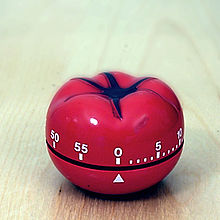I was talking with my writing partner last night about what makes a script a fun, easy read. Having a good writing style (prose/dialogue/layout) helps greatly, of course, but equally crucial is the way in which the story unfolds. In the course of our discussion, I realized that two principles in particular are key:
1. Almost any reversal/twist that hurts the protagonist will be welcomed by the reader/audience. They want to see how the protagonist is going to get out of whatever fresh hell this is, so they'll keep reading/watching.
2. However, a reversal/twist that helps the protagonist will usually be met with something between wariness and outright scorn -- unless the twist has been set up beforehand, in which case it can be very satisfying.
It might seem odd that I use the terms "reader" and "audience" interchangeably, given that a person reading a script most likely knows a fair amount about screenwriting, whereas the average moviegoer has never so much as cracked a book on the subject. In fact, audiences know quite a bit about writing, even if they don't know they know it. They certainly know enough to distinguish clever writing from lazy, sloppy writing.
Case in point: If James Bond spends ten minutes/pages battling his way through a small army of Russian soldiers to retrieve a jetpack the size of a pencil, the audience will have no problem believing that he can use that tiny gadget to fly to safety. On the other hand, if Bond is being chased on foot by evil agents through the streets of London and just happens to come upon an unlocked car with the keys in the ignition, the audience will call bullshit immediately. And why? I mean, which is actually more likely -- a six-ounce cylinder that makes you fly, or one person in a huge city accidentally leaving their keys in the car?
The answer is that it doesn't matter. The audience isn't responding to the actual plausibility of those things; they're responding to the strength (or weakness) of the writing. When they say, "That wasn't believable!" what they really mean is, "The writer didn't earn my suspension of disbelief."
Thursday, August 26, 2010
Tuesday, August 10, 2010
Pomodoro
I've been hearing about the Pomodoro system for several months now, and finally gave it a try yesterday. Upon reflection, I'd say it's easily one of the best tomato-based productivity enhancers I've come across, certainly more effective than downing a Bloody Mary before launching Final Draft, but maybe not quite as motivating as having a friend stand by with a jar of pasta sauce that he threatens to dump on your head if you don't meet your page quota.
For those unfamiliar, let's control-c/control-v some Wikipediary exposition:

It breaks down like so: 25 minutes on, 5 minutes off. The exactness of using a timer turns out to be fairly helpful in stimulating focus and creativity: no matter how much time you have left in the day, it feels really important to be productive while the clock is running. The break is also timed, which prevents you from getting too engrossed in your chosen distraction. (You've got enough time to get a glass of water and check a few blog headlines, but not enough to go on a snacks-and-YouTube binge.)
The physical object shown above can be purchased here, but who wants an actual ticking clock taking up space when there are easily downloadable apps that accomplish the same thing?
OSX: Pomodoro sticks a little ticking clock in your upper-right status bar and uses Growl notifications to tell you when the timer starts and ends. This is what I used, and recommend.
Windows: Keep Focused is much smaller and simpler; it uses a little hovering clock that, annoyingly, doesn't seem to be dock-able. There are probably other programs out there but this is what I was able to find with some quick googling.
iPhone: Pomodoro Timer costs 99 cents but looks snazzy and seems worth checking out.
For those unfamiliar, let's control-c/control-v some Wikipediary exposition:
The Pomodoro Technique is a time management method developed by Francesco Cirillo in the late 1980s.[1] The technique uses a timer to break down periods of work into 25-minute intervals called 'pomodoros' (from the Italian word for 'tomato') separated by breaks.No doubt, there are any number of Ben Franklin-type people who will be eager to leap forth from the grave and claim that they were doing this exact same thing centuries or millenia earlier; but the point is that none of them came up with a catchy name for it. Speaking of which, that name comes from the kitschy kitchen timer that Signor Cirillo used in college:

It breaks down like so: 25 minutes on, 5 minutes off. The exactness of using a timer turns out to be fairly helpful in stimulating focus and creativity: no matter how much time you have left in the day, it feels really important to be productive while the clock is running. The break is also timed, which prevents you from getting too engrossed in your chosen distraction. (You've got enough time to get a glass of water and check a few blog headlines, but not enough to go on a snacks-and-YouTube binge.)
The physical object shown above can be purchased here, but who wants an actual ticking clock taking up space when there are easily downloadable apps that accomplish the same thing?
OSX: Pomodoro sticks a little ticking clock in your upper-right status bar and uses Growl notifications to tell you when the timer starts and ends. This is what I used, and recommend.
Windows: Keep Focused is much smaller and simpler; it uses a little hovering clock that, annoyingly, doesn't seem to be dock-able. There are probably other programs out there but this is what I was able to find with some quick googling.
iPhone: Pomodoro Timer costs 99 cents but looks snazzy and seems worth checking out.
Subscribe to:
Posts (Atom)